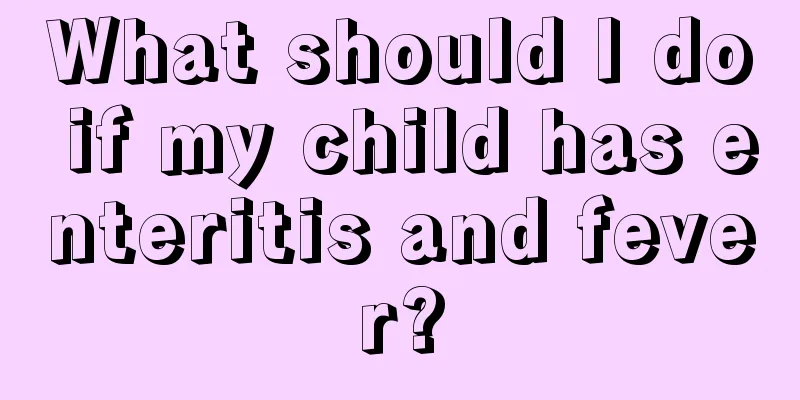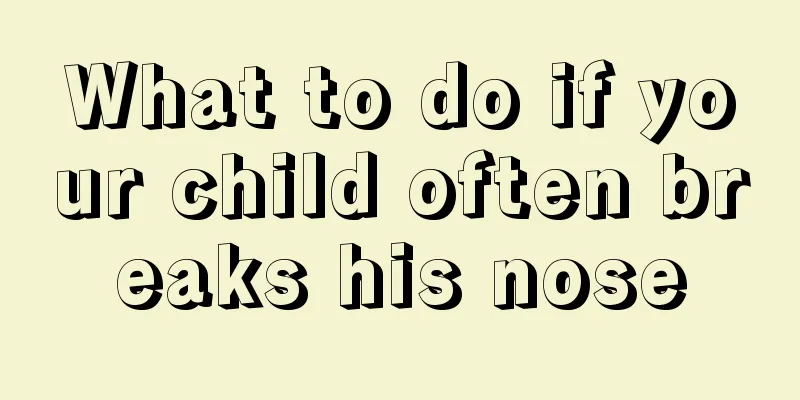What should I do if my child has enteritis and fever?

|
Enteritis is a very common gastrointestinal disease. Enteritis is divided into acute enteritis and chronic enteritis. Acute enteritis is the most common in children. Patients with enteritis will experience diarrhea, vomiting, and fever. Dehydration is likely to occur during diarrhea and vomiting, and prolonged fever is also very harmful to the body. So what should we do if children have enteritis and fever? 1) Feeding should be regular and quantitative. Add complementary foods gradually on time, but do not add starchy or fatty foods too early or too much, nor change the type of complementary foods suddenly. You can feed your baby some apple juice and carrot water to achieve the purpose of absorbing excess water in the intestines. 2) The process of weaning should be gradual and avoid quick decisions. Generally, it takes 2 weeks to switch to a new milk powder. The first switch should start with the middle meal of the day, and then increase the number of meals every few days until the baby is completely switched to the new milk powder. Taking into account the different physical constitutions of babies, the steps of changing milk can be adjusted according to the individual. 3) Pay attention to climate changes, add or remove clothes in time, and keep your abdomen warm. After each bowel movement, clean the baby's anus with warm water, change diapers frequently, handle feces in time and wash and disinfect hands to avoid repeated infection. At the same time, strengthen physical exercise to prevent colds, pneumonia, otitis media and other diseases. 4) If the situation occurs during the transition from breast milk to formula, you should pay attention to the stool of the formula-fed baby, which is usually soft and paste-like or in strips, and can be yellow or green in color. Generally speaking, every baby's bowel movements are different. As long as the baby's diet and daily life are normal and his growth and development are good, parents do not need to worry too much about the frequency, shape and color of the baby's bowel movements. 5) Once watery stools appear, beware of rotavirus diarrhea, also known as autumn diarrhea, which is an infectious enteritis that is common in autumn. The vast majority of children become ill after being infected with rotavirus. This disease is a self-limiting disease with a course of 3-8 days. The main treatment is fluid replacement, antiviral and symptomatic treatment. There are many causes of enteritis, mainly unhealthy diet or food poisoning. Therefore, when we have vomiting, diarrhea and fever, we should go to the hospital for examination as soon as possible and receive specific treatment according to the doctor's instructions. When you have a fever, you need to use physical methods to help reduce the temperature. The article also gives a detailed introduction, you can refer to it. |
<<: How many times a day is normal?
>>: What should I do if my four-year-old child has a fever?
Recommend
What to do if your child refuses to sleep
Many children are very energetic at night. In thi...
What causes pain in children’s thighs?
Children are the flowers of the future of the mot...
How long does it take for baby's keratitis to heal?
Keratitis is a very common eye disease, usually c...
What is the most effective way to treat dry cough without phlegm in children?
Diseases are very common in people's daily wo...
What should I do if my four-year-old child has a fever and diarrhea?
Children are young and have poor physical fitness...
What should students eat to nourish their brains and make their children smarter?
The pressure faced by students is getting greater...
How to treat congenital amblyopia in children?
Amblyopia refers to the absence of obvious organi...
What are the development standards for babies in the fifth month?
The growth and development of babies are differen...
Six and a half months of baby development standard method
After the baby is born, there will be new changes...
Why does my child's ankle hurt?
Children's childhood life is relatively rich,...
What are the possibilities for a baby's breathing problems?
Babies have a very important position in a family...
What should parents do if their children have poor self-control?
Some children have poor self-control and need adu...
There is a small white spot on the nipple of the baby boy
If a boy's nipples develop small white spots,...
What are the consequences of having only one kidney in a child?
After becoming pregnant, women pay special attent...
What should I do if my child has a runny nose and cough?
Many children usually have some minor colds. Mino...









